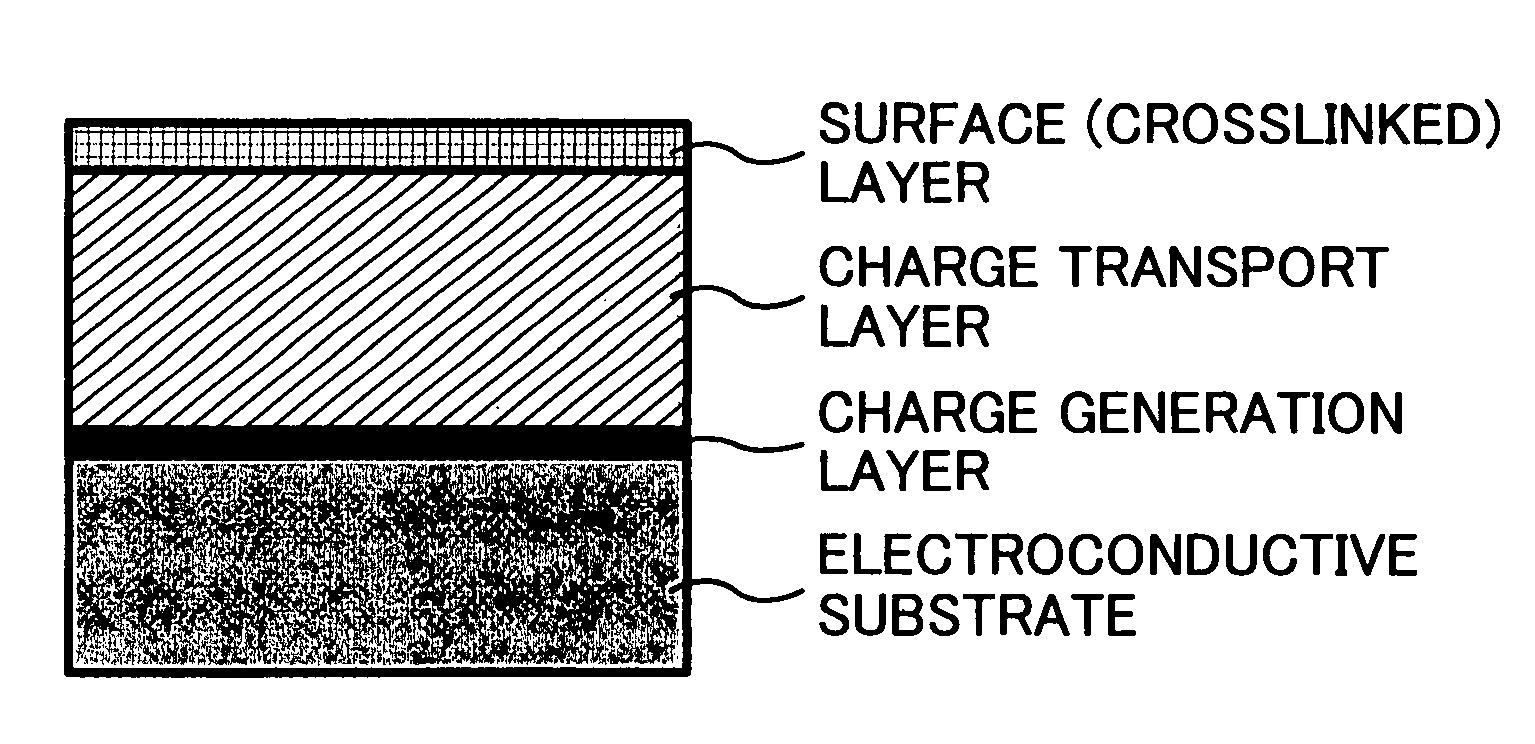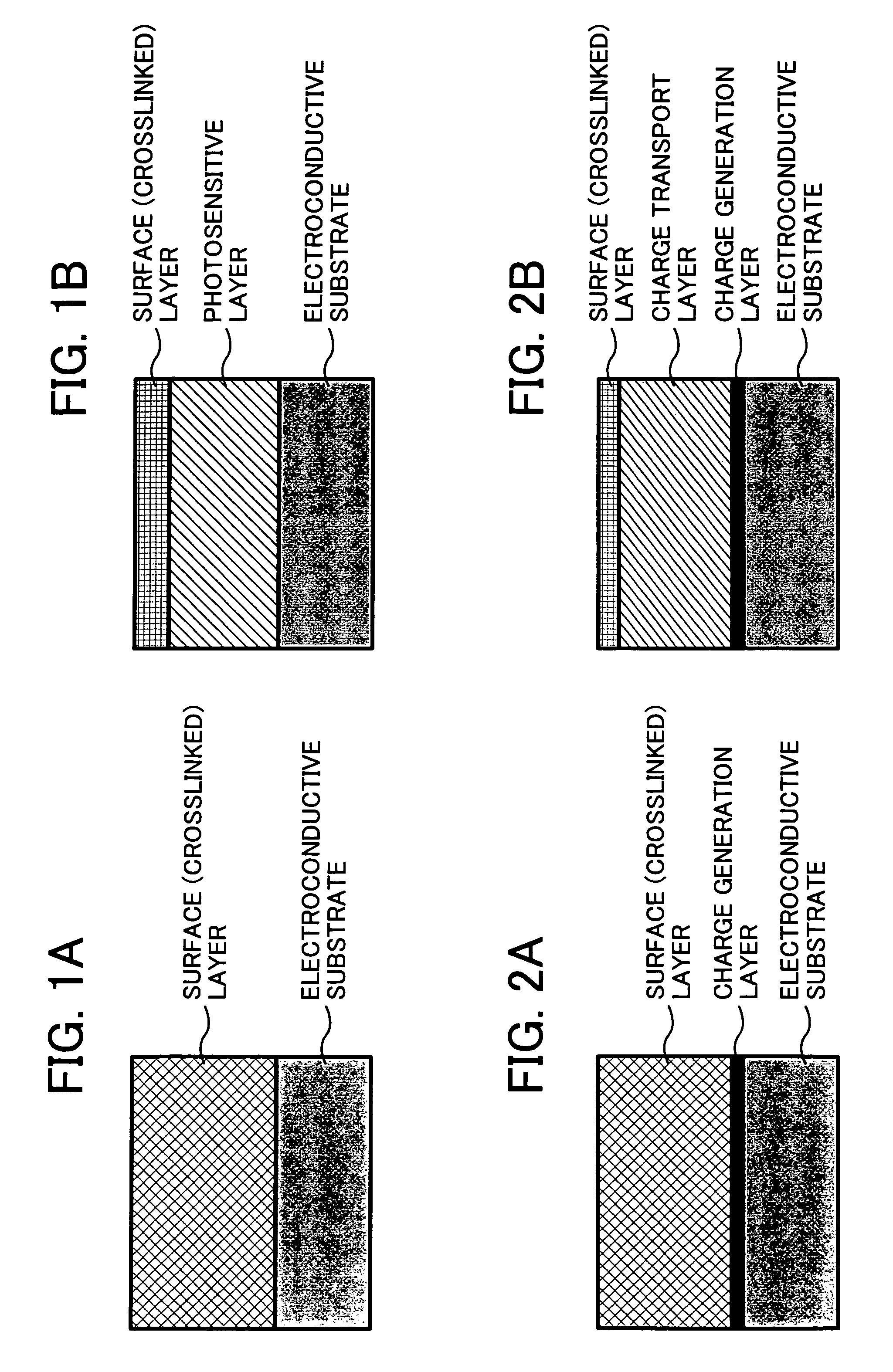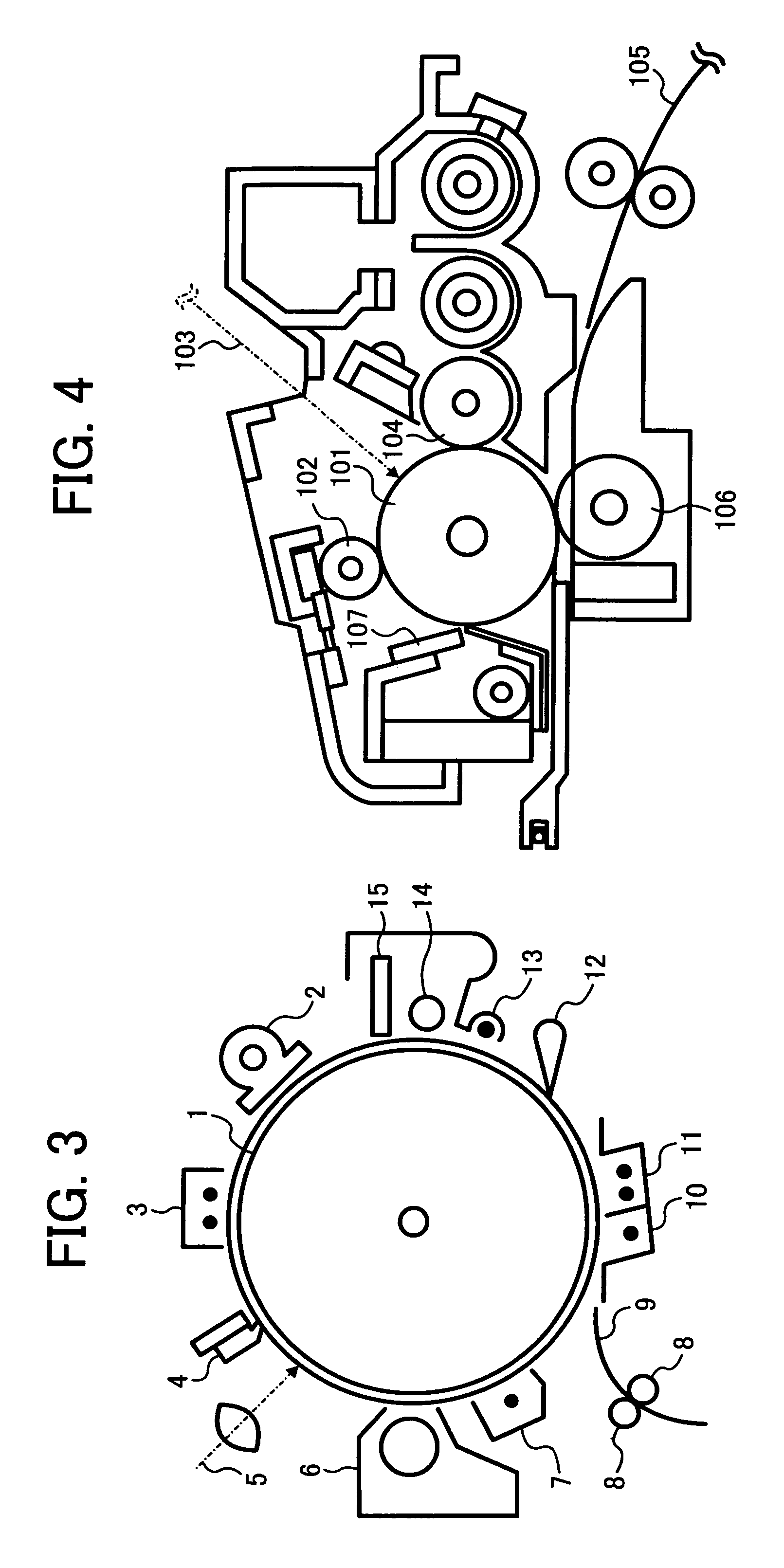Electrophotographic photoreceptor and method of preparing the photoreceptor, and image forming method, image forming apparatus and process cartridge therefor using the photoreceptor
a photoreceptor and electrophotographic technology, applied in the direction of electrographic process, instrumentation, corona discharge, etc., can solve the problems of abnormal images such as image density deterioration and background fouling, mechanical ablation of organic photoreceptors, and resin having sufficient durability, etc., to achieve high abrasion and scratch resistance, good electrical properties, and high-quality images for long periods
- Summary
- Abstract
- Description
- Claims
- Application Information
AI Technical Summary
Benefits of technology
Problems solved by technology
Method used
Image
Examples
synthesis example 1
[0191]292 g of 1,3-diiminoisoindoline and 2,000 ml of sulfolane were mixed, and 204 g of titaniumtetrabutoxide were dropped into the mixture under a nitrogen gas stream. The mixture was gradually heated until the mixture had a temperature of 180° C. and stirred for 5 hrs while the reaction temperature was maintained from 170 to 180° C. After the mixture was cooled, a precipitated material (powder) was filtered and washed with chloroform until the powder became blue. Next, the powder was washed with methanol for several times, and further washed with hot water having a temperature of 80° C. for several times to prepare a crude titanylphthalocyanine pigment. The crude titanylphthalocyanine pigment was mixed in a concentrated sulfonic acid in an amount of 20 times as much as the crude titanylphthalocyanine pigment and stirred therein to dissolve the pigment therein, and the mixture was dropped in iced water in an amount of 100 times as much as the mixture while stirred, and a precipita...
example 1
[0201]An undercoat coating liquid having the following formulation was coated on an aluminium cylinder having an outer diameter of 30 mm by a dip coating method, and dried to form an undercoat layer of 3.5 μm thick thereon.
[0202]
Undercoat layer coating liquidAlkyd resin6(BEKKOZOL 1307-60-EL fromDainippon Ink & Chemicals, Inc.)Melamine resin4(SUPER BEKKAMIN G-821-60 fromDainippon Ink & Chemicals, Inc.)Titanium dioxide powder40(CR-EL from ISHIHARA SANGYO KAISHA, LTD.)Methyl ethyl ketone50
[0203]A charge generation layer coating liquid having the following formulation including a bisazo pigment was coated on the undercoat layer by a dip coating method, and dried to form a CGL of 0.2 μm thick thereon.
[0204]
CGL coating liquidTitanylphthalocyanine pigment2.5prepared in Synthesis Example 1Polyvinylbutyral0.5(BX-1 from Sekisui Chemical Co., Ltd.)Cyclohexanone200Methyl ethyl ketone80
[0205]A charge transport layer coating liquid having the following formulation was coated on the CGL by a dip c...
example 2
[0210]The procedure for preparation of the electrophotographic photoreceptor in Example 1 was repeated to prepare an electrophotographic photoreceptor except that the surface maximum temperature thereof was 40° C. when irradiated.
PUM
| Property | Measurement | Unit |
|---|---|---|
| Bragg (2θ) angle | aaaaa | aaaaa |
| Bragg (2θ) angle | aaaaa | aaaaa |
| Bragg (2θ) angle | aaaaa | aaaaa |
Abstract
Description
Claims
Application Information
 Login to View More
Login to View More - R&D
- Intellectual Property
- Life Sciences
- Materials
- Tech Scout
- Unparalleled Data Quality
- Higher Quality Content
- 60% Fewer Hallucinations
Browse by: Latest US Patents, China's latest patents, Technical Efficacy Thesaurus, Application Domain, Technology Topic, Popular Technical Reports.
© 2025 PatSnap. All rights reserved.Legal|Privacy policy|Modern Slavery Act Transparency Statement|Sitemap|About US| Contact US: help@patsnap.com



